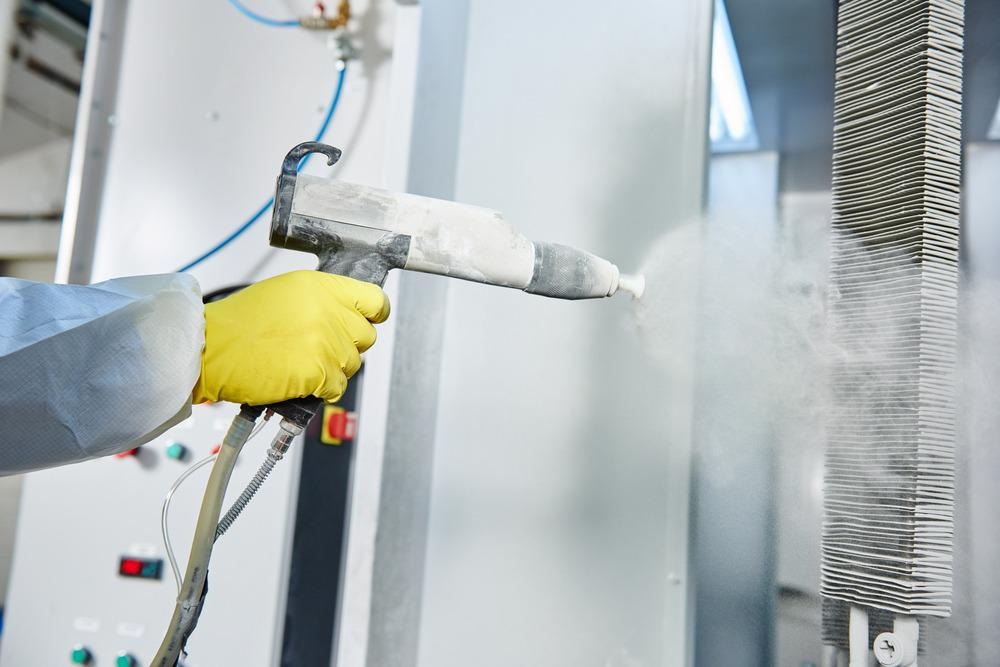This article discusses the optical properties of photocatalytic titanium dioxide-tungsten trioxide-reduced graphene oxide (TiO2-WO3-rGO) (TWG) thin films and TiO2 thin films and the feasibility of using these films for different applications, specifically as self-cleaning coatings (SCCs).

Image Credit: Dmitry Kalinovsky/Shutterstock.com
Importance of SCCs
SCCs have gained considerable attention in recent years for several applications in solar energy conversion systems, the automotive industry, and the construction sector. Multifunctional self-cleaning coatings also demonstrate antibacterial activity and antifouling, antifogging, and anti-frosting properties in addition to self-cleaning properties.
SCCs on photovoltaic (PV) modules can reduce fouling and lead to an enhanced power output by significantly preventing the loss of efficiency of the PV modules in the first 15 years of functioning. However, these coatings can degrade over time due to the exposure to weathering, which requires their reapplication on the modules.
A good SCC must have a high organic pollutant photodegradation efficiency and super-hydrophobicity or super-hydrophilicity to wash off the by-products of the photocatalytic process. These requirements can be controlled through the morphology and structure of the photocatalyst (PC).
Limitations of Existing Photocatalysts as SCCs
Common PCs, such as zinc oxide, TiO2, and WO3, are unsuitable as SCCs as they require ultraviolet (UV)-activation due to large band gap value. In a study published in the Journal of Physics: Conference Series, researchers investigated the optical properties of TiO2 thin films with thicknesses of 450, 300, and 150 nm and deposited by the chemical vapor deposition method.
The films demonstrated a maximum transmitted value of 78.2% for 100 nm thickness, and a high visible transmittance was observed up to 78% for 150 nm thickness. The absorption coefficient increased with decreasing thickness, while the refractive index increased with increasing film thickness. However, a high band gap value of 3.69 eV was observed in films with 150 nm thickness. The band gap of the films was reduced only when the thickness increased to 450 nm.
Composite TWG Thin Films as Effective SCCs
Composite materials with carbon-derivative fillers such as reduced graphene oxide (rGO) and metal oxide matrix can act as effective PC materials through visible (VIS)-activation and also due to the increased surface area of carbon fillers.
An enhanced electron storage material was obtained after adding rGO to the TiO2-WO3 composite through a one-step hydrothermal method. Photocatalysts that can effectively degrade 2,4-dichlorophenoxyacetic acid were synthesized by scattering gold-doped TiO2-WO3 nanoparticles (NPs) on rGO. However, these PCs can only function under UV irradiation.
Moreover, TWG hydrothermal powders also demonstrated high photocatalytic efficiency in the degradation of bisphenol A (BPA) and methyl orange (MO) under solar and VIS radiation. However, the hydrophilicity of the TWG composites must be increased significantly to make them more effective as SCCs under solar or VIS radiation.
In a study recently published in the Surfaces and Interfaces, researchers synthesized composite TWG thin films and evaluated their feasibility as SCCs with good photoactivity under UV-vis radiation, controlled optical properties, and good wetting properties. Researchers used a low-temperature, versatile, and low-cost deposition method to coat the TWG powders over large areas.
Two sets of TWG composite thin films were obtained using different deposition processing parameters. The first set was obtained using a layer-by-layer deposition, where the deposition of TiO2-rGO dispersions was followed by the deposition of WO3-rGO dispersions. The second set was obtained using a one-batch deposition of TiO2-WO3-rGO dispersions. rGO-free thin films were utilized as reference samples.
One-batch deposited films demonstrated a lower water contact angle of 11o compared to 18-20o in the layer-by-layer deposited films, which led to higher adsorption of pollutants that enhanced the overall photocatalytic degradation efficiency of MB and phenol (PH) in one-batch deposited samples compared to layer-by-layer deposited samples.
The photodegradation efficiency of MB was higher at 28% compared to PH at 16% in the one-batch deposited samples due to the greater attraction between the negatively charged PC surface and MB cationic dye compared to the interactions involving PH or due to dye sensitization of the photocatalyst (PC) surface.
All thin film samples displayed transmittance values of more than 80% and reflectance values below 15% over a large wavelength range with little scattering or absorption of light, indicating the effectiveness of these TWG coatings for glazing protection.
Overall, the one-batch deposited TWG thin films with lower water contact angles and higher photocatalytic degradation efficiency was more suitable as SCCs compared to layer-by-layer deposited films.
To summarize, composite TWG thin films deposited by the one-batch deposition method could be used effectively as SCCs compared to common photocatalyst thin films, such as TiO2-based thin films. Additionally, these composite films can be reapplied in-situ on functioning PV modules as SCCs due to their easy deposition method.
References and Further Reading
Visa, I., Duta, A., Bogatu, C., Perniu, D., Covei, M. (2022). Photocatalytic Composite Thin Films with Controlled Optical Properties Based on TiO2, WO3 and rGO. Surfaces and Interfaces, 31, 102075. https://doi.org/10.1016/j.surfin.2022.102075
Mohammed, I. M., Abd, A. N., Hasan, M. H., Raoof, L. M., Abdullah, M. T. (2021). The Effect of Different Thickness on The Optical and Electrical Properties of TiO2 Thin Films. Journal of Physics: Conference Series, 1999(1). https://doi.org/10.1088/1742-6596/1999/1/01212
Disclaimer: The views expressed here are those of the author expressed in their private capacity and do not necessarily represent the views of AZoM.com Limited T/A AZoNetwork the owner and operator of this website. This disclaimer forms part of the Terms and conditions of use of this website.